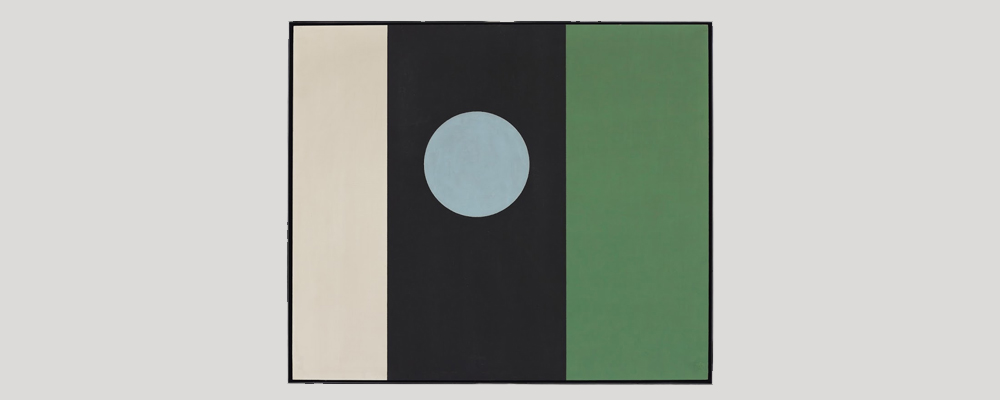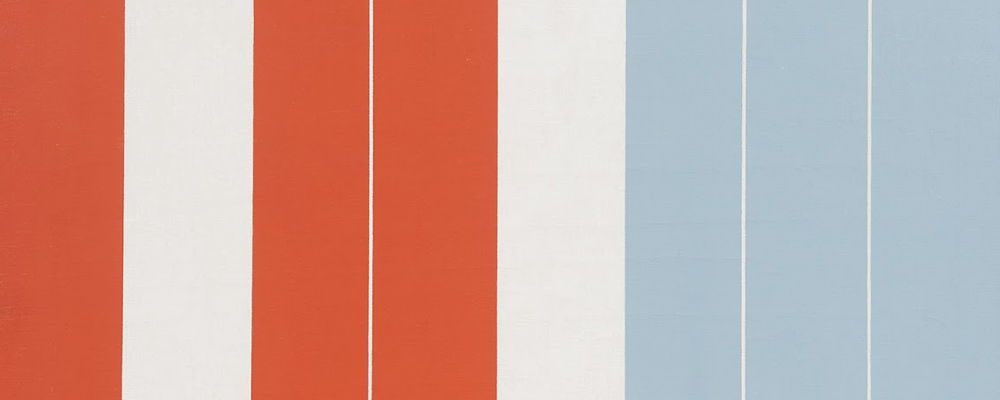Rectangle Reductionist John McLaughlin Comes Home in BCAM Exhibit, ‘Total Abstraction’
Steve Silkin
“I could do that,” say the uninitiated when viewing abstract artists such as American mid-century painter John McLaughlin. Ah, but the question is, would you? And if so, why?
The Los Angeles County Museum of Art’s Broad Contemporary examines that mystery with its current exhibit, “John McLaughlin Painting: Total Abstraction.” He’s an especially interesting case. An expert in Asian art, he took up painting later in life, and after just a few landscapes and still lifes, discovered he was more interested in shapes. And only shapes. And very simple shapes at that. And finally he discarded any curved shapes. And only painted rectangles.
“My purpose is to achieve the totally abstract,” he once said. “I want to communicate only to the extent that the painting will serve to induce or intensify the viewer’s natural desire for contemplation without benefit of a guiding principle. I must therefore free the viewer from the demands or special qualities imposed by the particular by omitting the image …. This I manage by the use of neutral forms.”
It was obvious to critics that this manifesto of sorts reflects his Asian influence, in its Zen-like quality of leaving an open space for the viewer to pour into. Whether the “I-could-do-that” crowd will accept his invitation, well, that’s another question. Today, McLaughlin is considered a leading proponent of the abstract classicism of his day.
McLaughlin, born 1898 in Massachusetts was one of seven children. His father, a superior court judge, got him interested in art. As a young man he served in the Navy during World War I, then served again as a Marine translator in the Asian theater of World War II. He and his wife Florence, a descendant of Ralph Waldo Emerson, lived in Japan in the 1930s, then opened a gallery specializing in Japanese art in Boston. After World War II, they settled in Dana Point and although he was self-taught, built his reputation as a serious painter.
The exhibit, which features 52 of McLaughlin’s paintings, is a homecoming of sorts for the artist, whose work was featured in a 1962 Life magazine article on the new school of California painters, including Robert Irwin – influenced himself by McLaughlin – and Billy Al Bengston. Welcome back to the beach, Mister Rectangle!
“John McLaughlin: Total Abstraction” is at the Los Angeles County Museum of Art’s Broad Contemporary building Nov. 13 – April 16. The museum’s general admission tickets are here.



